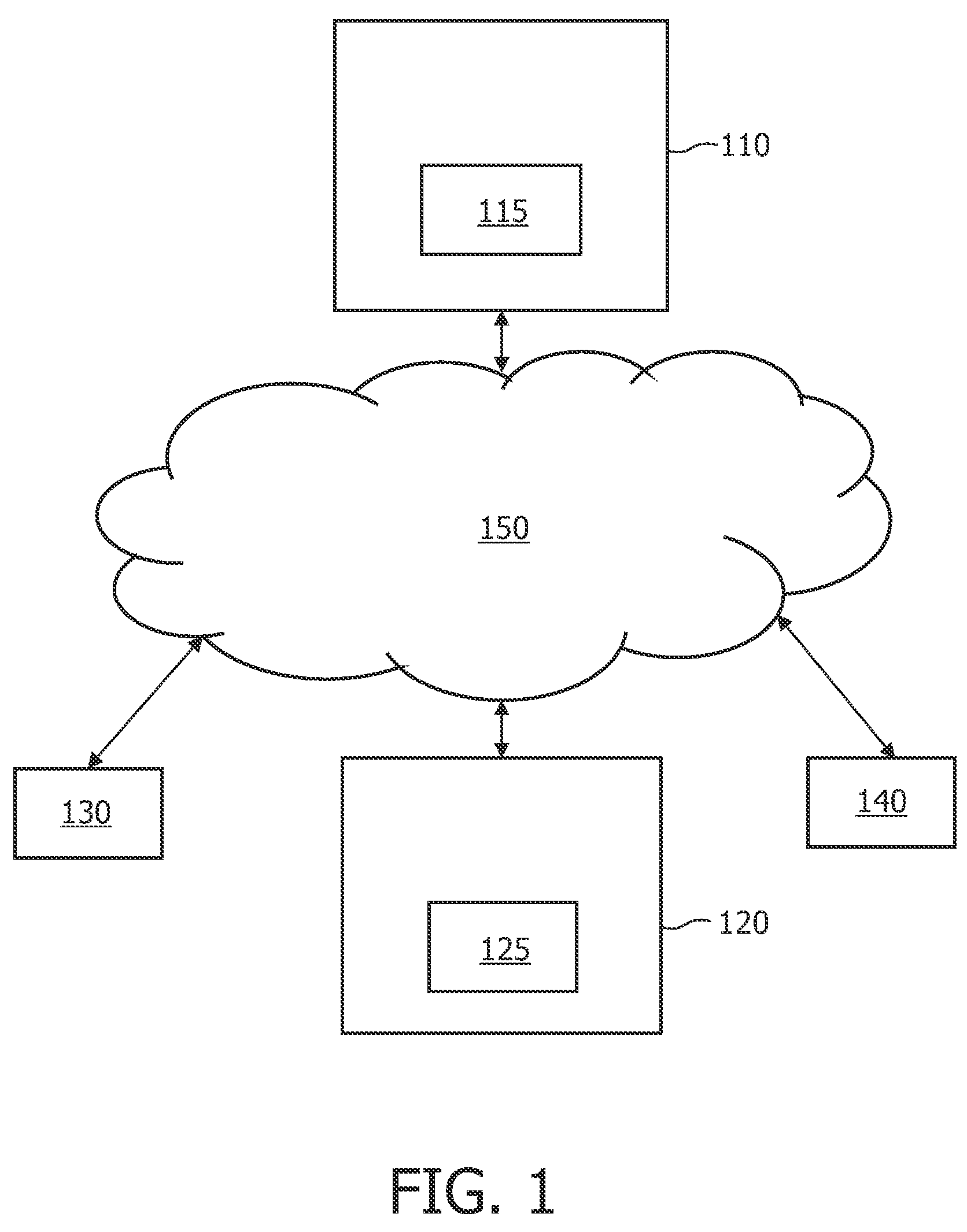Remote Informed Watermark Detection System
a detection system and watermark technology, applied in image watermarking, digital transmission, instruments, etc., can solve the problems of inability to fully trust the handling of side-information and potentially hostile environment of client/peer devices, and achieve the effect of reducing one, reducing one, and eliminating on
- Summary
- Abstract
- Description
- Claims
- Application Information
AI Technical Summary
Benefits of technology
Problems solved by technology
Method used
Image
Examples
first embodiment
[0040]A more detailed diagram, including elements of a remote informed watermark detection system and signals exchanged within the process according to the invention is shown in FIG. 2. It consists of a server computing system 210, a remote detector 220 and a computer network 150. The remote detector 220 comprises of a descriptor deriver 224 and an informed watermark detector 226. The server computing system 210 comprises of a side-information database 212 wherein information is typically represented by a look up table 214. The remote detector typically will obtain a data signal 250 from the Internet and derive a descriptor 216 from the data signal at the descriptor deriver 224. The descriptor 216 is sent to the server computing system 210 which checks the look up table 214 for an entrance with the descriptor 216, extracts the corresponding side-information 218 assigned to the specific descriptor, and sends the side-information back to the informed watermarked detector 226. The info...
second embodiment
[0047]A flow chart illustrating steps executed at a remote detector 220 for a method of remote informed watermark detection according to the invention is presented in FIG. 3. In step 310 the remote detector 220 obtains a data signal, e.g. receives it from the Internet within use of a web-spider looking for forensic watermarks, In step 320 a descriptor is derived from the data signal and is subsequently transmitted 330 to a server computing system 210. In step 340 the remote detector 220 receives, in response to the descriptor, a message from the server computing system and subsequently transmits an acknowledgement message 350 to the server computing system indicating the correct reception of the message. In step 360 the remote detector checks if the message contains side-information. If the message contains other than side-information, e.g. the message indicates that the side-information was not found at the server computing system, the remote detector will stop communication with t...
PUM
 Login to View More
Login to View More Abstract
Description
Claims
Application Information
 Login to View More
Login to View More - R&D
- Intellectual Property
- Life Sciences
- Materials
- Tech Scout
- Unparalleled Data Quality
- Higher Quality Content
- 60% Fewer Hallucinations
Browse by: Latest US Patents, China's latest patents, Technical Efficacy Thesaurus, Application Domain, Technology Topic, Popular Technical Reports.
© 2025 PatSnap. All rights reserved.Legal|Privacy policy|Modern Slavery Act Transparency Statement|Sitemap|About US| Contact US: help@patsnap.com



